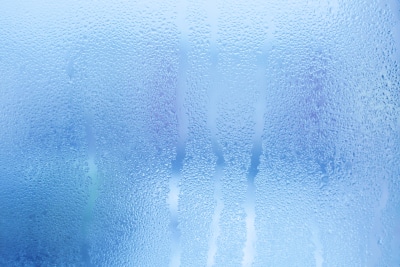
Humidity is something we all think we know, but what exactly is it? Simply put, humidity attempts to quantify how much moisture is in the air.
Understanding humidity is important for answering meteorological and non-meteorological questions like “will it be cloudy today?”, “will it be foggy today?” and “how hot will it feel when I go outside?”.
Humidity can be confusing, though, because people use the term to mean different things. In this article, you’ll learn how to measure humidity and what it all means for you.
What Does Humidity Percentage Mean?
Most people come across information about humidity in the form of a percentage referenced on TV or displayed in a weather app.
The humidity percentage refers to the relative humidity (RH) expected at a given place at a given time. RH is expressed as a percentage.
We determine RH as a measure of the amount of moisture currently in the air relative to the total amount of moisture that the air pocket can hold at a given temperature.
Each pocket of air can only hold a finite amount of water vapor. Temperature changes this amount. Warmer air, for various physical and chemical reasons, can hold more water vapor than colder air.
However, absolute humidity is a measure of how much water vapor is actually contained within a given amount of air, regardless of the air’s temperature.

Absolute Humidity vs. Relative Humidity
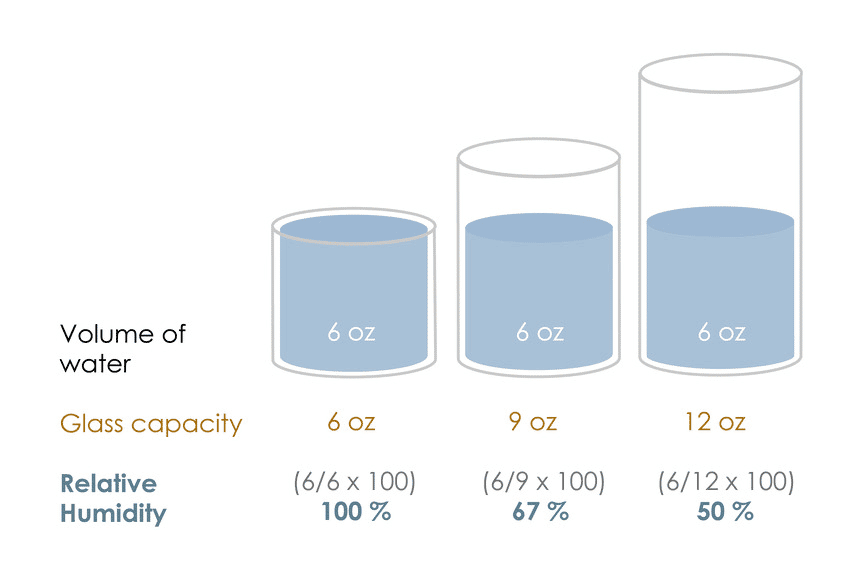
The best way to keep relative humidity and absolute humidity straight in your head is to imagine three cups of water: a 6oz, 9oz, and 12oz cup. Each cup represents a different air temperature.
The smaller 6oz cup represents a cold body of air, the 9oz cup represents a warmer section of air, and the 12oz cup represents the warmest area of air.
As the temperature increases, the air’s capacity (or, in this case, the cup’s capacity) to hold moisture also increases.
If you filled all three cups with the same amount of water (6oz, for example), the 6oz cup would be full at the cooler temperature and have 100% relative humidity.
The warmer air represented by the 9oz glass is said to have 67% relative humidity, and the warmest air represented by the 12oz cup would have 50% relative humidity, even though all the cups contain the absolute same amount of water.
Most people have heard about relative humidity more often. That said, absolute humidity is usually more relevant to your daily life (with a couple of exceptions, discussed below).
Because cold air holds less water vapor, relative humidity is often very high in the winter, even though you’d never go outside in January complaining about how humid it is (in the northern hemisphere).
Similarly, on a hot and sticky day in July (northern hemisphere), the relative humidity might only be 50-60% even though it feels deathly humid simply because the hot summer air can hold even more water vapor.
Dew Point
The dew point is the most common measure of absolute humidity that is communicated in TV weather reports and weather app forecasts.
Imagine warmer air conditions with relative humidity below 100% (say 50%), remembering that cold air can hold less moisture than warm air. Without removing any moisture, what temperature would you have to cool down to for the relative humidity to be 100%?
That magic temperature is called the dew point. It helpfully coincides with the temperature at which dew forms on surfaces. When the air can no longer hold all that water vapor, it will lose some water in the form of water droplets (because of condensation).
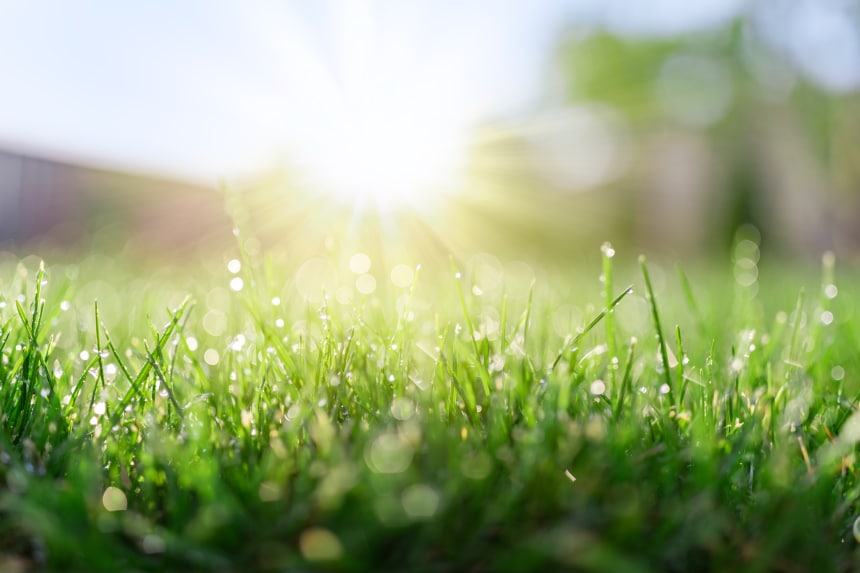
The dew point temperature will tell you how it’ll feel when you walk out the door or if the humidity might wreck your hairdo.
Everyone has a different humidity sensitivity, but my personal guideline is that a dew point below 50°F is comfortable, 50-60°F is noticeably more humid, 60-65°F is humid, 65-70°F is extremely humid, and anything above 70°F is just wretched.
Your sensitivity may vary. Suppose you’re accustomed to the sweltering humidity of Florida. In that case, you might find a 60-degree dew point quite comfortable. However, those acclimated to the bone-dry deserts of Arizona might find a 50°F dew point uncomfortably sticky.
What Does 100 Percent Humidity Mean?
100% relative humidity simply means that the air has reached its water vapor capacity and can’t accept anymore.
If more moisture comes along, or if the temperature drops, the air must shed water vapor in the form of water droplets. When this happens near the ground, you’ll see dew and/or fog. If it happens in the sky, you’ll see clouds.
Note that a relative humidity reading of 100% does not necessarily mean it will rain or snow. For precipitation to occur, many water droplets need to collide and merge.
100% relative humidity means that water vapor is condensing into smaller droplets, not necessarily that they will collide and merge into rain (or snow) clouds. Similarly, you don’t need the relative humidity to hit 100% at the surface for precipitation to occur.
Let’s suppose enough moisture is present higher in the atmosphere, and conditions are favorable for cloud droplets to collide and grow into raindrops or snowflakes. In that case, precipitation can happen even with relative humidity values well below 100% at the surface. However, some of that precipitation will evaporate before hitting the ground. It is known as virga if all the precipitation evaporates in a layer of near-surface dry air with very low relative humidity.

What Causes Humidity?
Humidity is caused by moisture that enters the atmosphere via evaporation (and, to a much lesser extent, sublimation).
When water evaporates off lakes, oceans, and objects like your car after a rainstorm, it enters the atmosphere as water vapor. This water vapor is measured with a hygrometer as humidity.
If too much water vapor forms in one place, either due to converging winds or persistent evaporation from a nearby water source, you’ll feel it in the form of high humidity.
What is Considered High Humidity?
Everyone has a different definition of what they personally consider high humidity. In general, outdoors humidity is most usefully measured in absolute terms using the dew point.
Personally, I consider any dew point over 60°F annoyingly high.
Indoors, what counts as a high humidity percentage is a little more objective. The main issue with having too much humidity indoors is that mold likes to grow in humid indoor environments.
The EPA recommends keeping relative humidity levels between 30 and 50% indoors, and no higher than 60% to prevent mold growth that could be dangerous to your health.
Keeping indoor humidity levels low will also prevent other issues, such as peeling wallpaper or paint and damage to furniture.
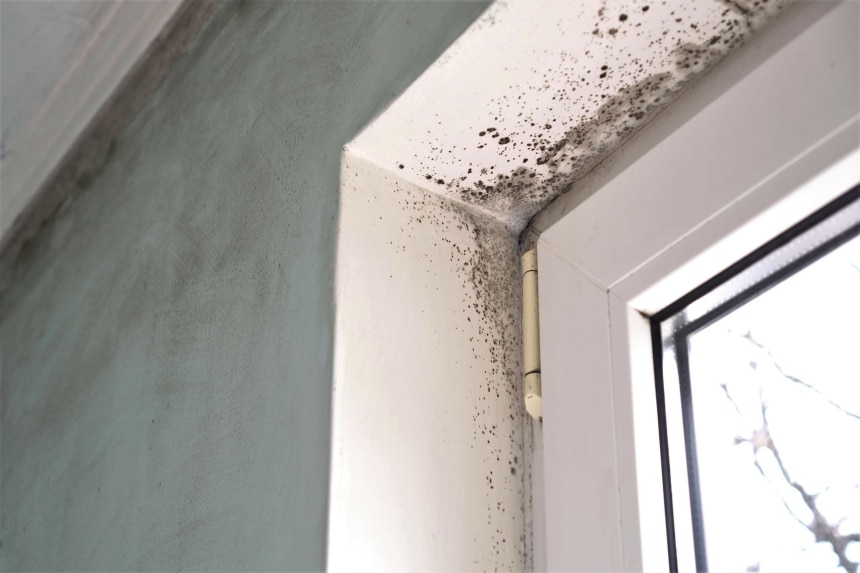
You can measure indoor humidity using a simple hygrometer (often accompanied by a thermometer and a small display screen). Read our guide here to find a suitable hygrometer for your needs.
Even if you don’t purchase one of these instruments, you can watch for signs of high humidity. Visible condensation, mold growth, fogging windows, clammy and moist air, and peeling paint or wallpaper signal high humidity.
How to Lower Indoor Humidity
If your indoor humidity becomes too high, you can take a few steps to reduce it. The most important one is to increase ventilation, especially if you live in a dry climate.
Opening windows/vents and turning on exhaust fans, especially during humidity increasing activities like cooking and showering, can help immensely.
If that’s not sufficient, or you live in a climate with high outdoor humidity, consider purchasing a dehumidifier to control the humidity. Running your air conditioning can also regulate the moisture in the air but not to the same extent as a dehumidifier. Read our article here to learn about more ways to reduce the humidity in your home.
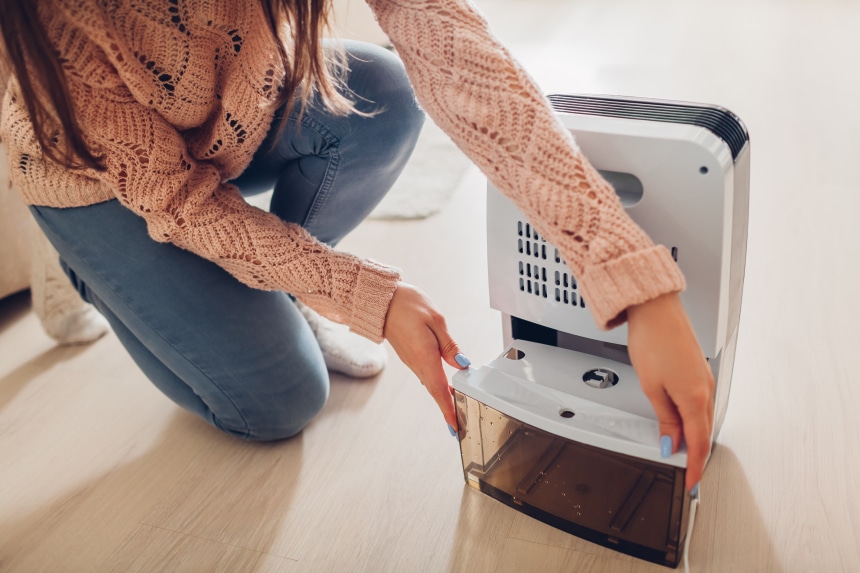
Why Is Humidity So Uncomfortable?
Our bodies primarily shed heat by sweating. When we sweat, moisture accumulates on our skin which then evaporates.
Evaporation produces a cooling effect, keeping us from overheating. The drier the air is near your skin, the more efficient this evaporation process, and the cooler you will become as you sweat.

If the air near your skin is humid, it’s already close to being “full” of water vapor. Therefore, evaporation will happen much more slowly, if at all. So, you won’t be able to access as much of the cooling benefit of evaporation, making cooling off more challenging.
For these reasons, dry heat is generally regarded as less unpleasant than sweltering humidity.
Some people also find that high humidity can wreak havoc on their hairstyles. When it’s very humid, the moist air sinks into your hair.
All that extra water can result in frizziness for those with intense curly hair. If you need your hair looking a certain way when it’s humid, plan ahead and get special styling products that will help keep the frizz in check.
Final Thoughts
Humidity can be a powerful indicator to help you understand how much moisture is present in the air around you, but it can also be confusing.
Remember the difference between relative humidity (RH), which measures how “full” a given volume of air is, and absolute humidity, which measures the actual amount of water vapor in the air.
In general, relative humidity is more useful indoors to prevent mold and other damp-related damage to your home. In contrast, absolute humidity, reflected by the dew point, is a better indicator of how you will feel while enjoying the outdoors.


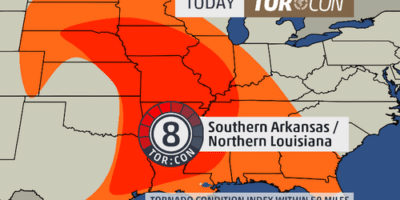


Great article! If I wanted to raise the absolute humidity in my home, how would I do that?
You may want to raise the indoor humidity to improve the air dryness in your home. Do this by using the following methods:
– Boil water with a vaporiser to increase the water content of the air
– Raise the indoor temperature, as warm air holds more water
– Switch off fans, as fans distribute the moist air over a larger area, reducing the humidity
Can the air have a zero humidity level?
The air on earth is composed of water and oxygen. Naturally, there can’t be an area with absolute zero humidity readings. While humidity can have a low value, it can’t ever be zero.
Does a higher humidity increase how hot it feels or does it cool things down?
When warm air has a higher moisture content it will feel warmer to the skin. High humidity (or high moisture) increases temperature since warm air holds more water. The more water, the warmer it feels.